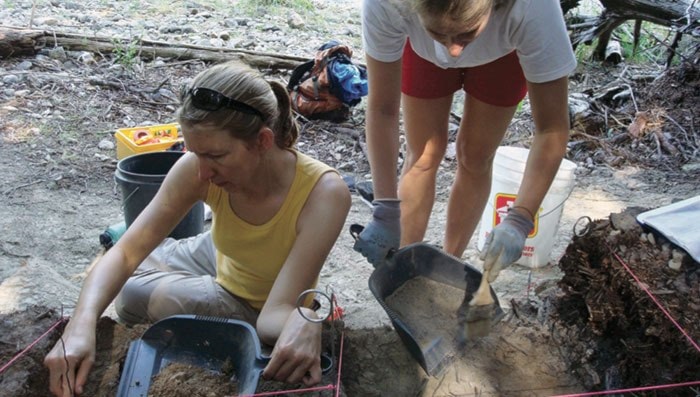For six weeks this summer, two or three Selkirk College students will have the opportunity to study and work with an anthropology and archaeology expert at a Slocan Narrows field school near Lemon Creek, potentially unearthing significant finds.
Dr. Nathan Goodale, assistant professor of anthropology at Hamilton College in New York, said he has been visiting the site since 2000, when he was a masters student at the university of Montana. He plans to take a total of about a dozen student from both Selkirk and Hamilton College (NY).
Reached by telephone, Dr. Goodale was busy getting ready for an annual archaeology conference but had time to discuss a little about why the importance of the site.
"The first season of work illuminated a pattern of early occupation that we now understand went up to about 2,500 years ago," said Goodale. "And then there was a break in the chronology before it started up again about 2,000 years ago."
Recognizing that pattern was a bigger trend in the occupation of the region, Goodale and his team started to get a better understanding of some of the earliest pit house villages in the area (3,000 - 3,500 years ago).
Subsequent work has found it's not just the Slocan Narrows / Lemon Creek site that had this break in chronology and occupation but the region as a whole went through a similar process.
"We're trying to figure out what it means and what it represents in terms of First Nations inhabiting the region," said Goodale. "There seems to have been a major shift in the way people were living there."
Goodale said one his major goals for the project, with the help of local students, is to develop a better understanding of the pre-history of the Upper Columbia River system, bridging the knowledge gap between it and adjacent systems such as the Fraser River, which has been extensively studied.
Most of the students selected from Selkirk College will have had several anthropology courses already, and enter the field work with some background in anthropology and archaeology.
Goodale said they have a camp set up near the site and it's a great place for the project to blend research with practical, hands-on archaeological field techniques.
"We do have a cabin that we rent for cooking and cleaning out of."
Discovering what the archaeological record can say about the history of First Nations people is also a key issue of the work.
"We are doing geo-chemical studies that will allow us to match artifacts from the excavation back to the original geological outcropping," said Goodale. "Once we talk about stone moving, we can talk about people moving."
At this point the plan is to run the school every other summer, this being the second year of collaboration with Selkirk.
Funding for the field school has come from a number of sources, including Hamilton College, the Digital Humanities Initiative at Hamilton (Andrew-Melon funded entity) and the Columbia Basin Trust, which helps with a lot of radio-carbon dating work. The Slocan Valley Rail Trail Society has also developed an important partnership with the program.
A public archaeology day is scheduled near the end of the field season, July 13, when everyone can visit and learn what has been unearthed at the site.
